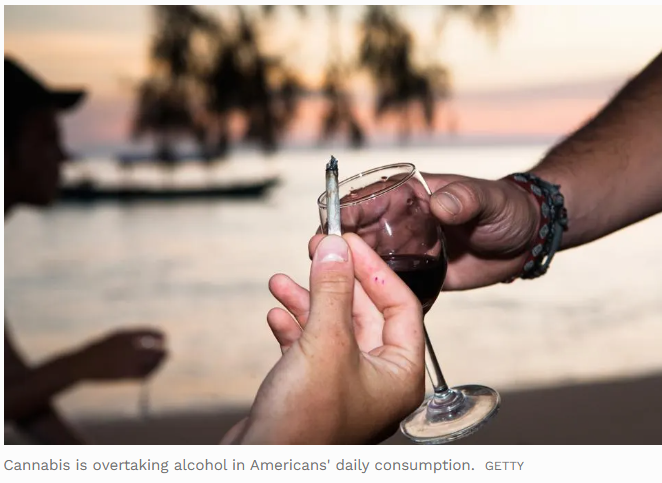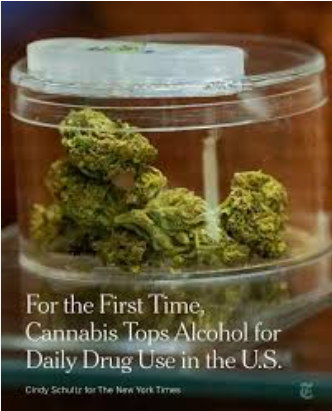By Joke Kujenya
THERE’S GREEN shift. Jonathan P. Caulkins, a professor at Carnegie Mellon University, couldn’t ignore the numbers staring back at him from his research.
He notes that Americans, for the first time in history, are choosing cannabis over alcohol for their daily consumption.
This worrisome trend was detailed in his latest study, published in the journal Addiction by the Society for the Study of Addiction.
Caulkins’ analysis spanned from the 1970s to 2022, scrutinizing the evolving landscape of cannabis use in the United States.
His findings painted a vivid picture of a cultural shift that had been steadily brewing.
The study meticulously mapped out four pivotal periods in U.S. cannabis policy: the liberalization of the 1970s, the conservative “Reagan-Bush drug war” era from 1980 to 1992, the medical marijuana liberalization from 1993 to 2008, and the era of federal non-interference leading to state-level legalizations from 2009 to 2022.
By the early 1990s, cannabis use had plummeted to its lowest point, a direct consequence of stringent drug policies. But as the years rolled on, the numbers began to climb.

The data, drawn from the National Survey on Drug Use and Health (NSDUH), revealed a dramatic increase in cannabis consumption, especially after 2009.
This surge was fueled by a federal stance that chose not to interfere with state laws, such as the landmark legalizations in Colorado and Washington in 2012.
The study’s figures were startling. Between 2008 and 2022, the number of Americans reporting past-year cannabis use more than doubled.
Total annual days of cannabis use skyrocketed from 2.3 billion to a staggering 8.1 billion days.
This “billions of days” metric illustrated the cumulative number of days cannabis was consumed across the user base, highlighting the profound shift in daily habits.
In 2022, the typical cannabis user indulged 15 to 16 days per month, far outpacing the average drinker who consumed alcohol just 4 to 5 days per month.
While alcohol remained more widely used overall, the intensity of cannabis use was unparalleled, with over 42.3% of monthly users partaking daily, compared to only 10.9% of alcohol users.
These consumption patterns mirrored those of cigarettes, signaling a new era where cannabis use was ingrained in daily routines.
The study emphasized the significant impact of public policy on cannabis consumption, with relaxed laws correlating with increased use.
Despite the inherent limitations of self-reported surveys, such as potential biases and the exclusion of certain demographic groups, the trend was undeniable.
As social acceptance of cannabis grew, so did the willingness of individuals to report their use, possibly inflating the rates.
The diverse range of cannabis products now available further complicated traditional definitions of use.
Caulkins’ study, it was noted, revealed more than just numbers; “it chronicled a cultural evolution.”
Whether these legal changes directly influenced usage patterns or reflected a broader shift in attitudes toward cannabis remains a topic for further exploration, according to a report.
However, one fact stood clear: cannabis had firmly rooted itself in the daily lives of Americans, surpassing alcohol and heralding a new era of consumption, the study reiterates.
At JKNewsMedia, our dedication to delivering reliable news and insightful information to our cherished readers remains unwavering. Every day, we strive to provide you with top-notch content that informs and enlightens. By donating to JKNewsMedia, you directly contribute to our mission of delivering quality journalism that empowers and informs. Your support fuels our commitment to bringing you the latest updates and in-depth analysis. Let's continue to uphold the highest standards of journalism and serve our community with integrity and dedication. Thank you for being a part of the JKNewsMedia family and for your ongoing support.





